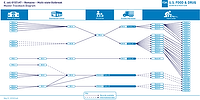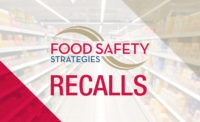New Romaine Lettuce E. coli Outbreak Investigation Kept Secret for 6 Weeks

Yesterday, the U.S. Food and Drug Administration (FDA) shared, for the first time, news of yet another Escherichia coli O157:H7 outbreak—this time sickening 23 people—that was likely linked to romaine lettuce. No deaths have been reported.
Upon identifying an illness cluster, the U.S. Centers for Disease Control and Prevention first notified FDA in September 2019, prompting a traceback investigation. The 23 illnesses were reported in 12 states—Arizona (3), California (8), Florida (1), Georgia (1), Illinois (2), Maryland (1), North Carolina (1), Nevada (1), New York (1), Oregon (1), Pennsylvania (2) and South Carolina (1). Eleven of the ill individuals had to be hospitalized. Illness onset dates range from mid-July 2019 through early September 2019.
Traceback investigators visited farms in California’s central coast region as they were identified as the possible origin of contaminated romaine lettuce. Environmental samples were collected and tested, however, the outbreak strain was not identified. While romaine lettuce is the likely cause of the outbreak, the investigation did not identify a common source or point where contamination occurred.
FDA Deputy Commissioner for Food Policy and Response Frank Yiannas said in a statement that the agency does “not believe there is a current or ongoing risk to the public and we are not recommending the public avoid consuming romaine lettuce,”
FDA says that once romaine lettuce was identified as the likely outbreak source, the contaminated produce was likely past its shelf life and no longer available for sale, which is why no recall or public announcement was made.
“The FDA is communicating details about the outbreak at this time to help ensure full awareness by the public and to highlight the ongoing importance of industry actions to help ensure the safety of leafy greens.”
Yiannas commented that FDA’s investigation, “along with previous outbreaks linked to romaine, reinforces the recommendations that we have made to the leafy green industry: producers must continue to review their practices and improve traceability to enhance food safety.
The outbreak appears to be over and the investigation into the outbreak source is complete.
Looking for a reprint of this article?
From high-res PDFs to custom plaques, order your copy today!






